Geoff Langan
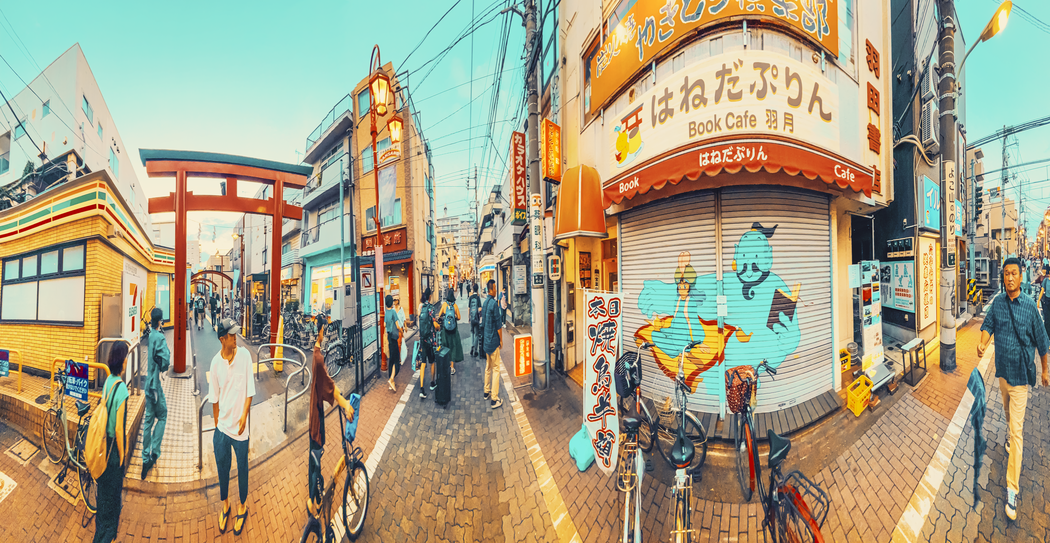 Geoff Langan | Anamorifureai Street, Tokyo
Geoff Langan | Anamorifureai Street, Tokyo
Can you tell us about your artistic background? How did you come to focus on photography?
I had been a professional portrait/reportage photographer in London for most of the 1980’s and 90’s. Most of my work was editorial for magazines such as Marie Claire, Cosmopolitan, and Tatler, as well as the Saturday and Sunday colour supplements. This was a fascinating time, as I had the opportunity to meet people I would not normally encounter. One day I could be photographing the Governor of the Bank of England, the next day a feature on Transvestites and their Wives, then a three-star Michelin Chef in his kitchen. Those days were golden.
After our first child was born, we moved out of London to a small town near Bristol, Southwest England. My photographic work had been dwindling, and I tried to reinvent myself as a food photographer. It worked for a while, then…it didn’t. Looking back, I could have blamed the era of digital photography, which made photography seem cheap and easy, which in turn, devalued professional photography. I could have easily blamed the introduction of giant photo libraries, which turned stock photography into high-end, affordable images for clients. I could have blamed the universities whose annual coterie descended on London’s magazine and newspaper world eager for a chance to do work, even if they didn’t get paid. The person I didn’t blame was myself.
With the lack of photographic work, I had time on my hands, so I decided to volunteer at Barley Wood, a residential drug and alcohol rehabilitation unit. They immediately offered me a job as a Support Worker, and that was the end of my photography career. The relief was enormous. During my time at Barley Wood, I learned so much about the true nature of addiction. I also discovered that I was an alcoholic. I was so inspired by the work at Barley Wood that I went to university and studied to become a Counsellor. I spent the next ten years specialising as an Addiction Counsellor.
Time passed, circumstances changed, and I grew frustrated with Counselling. I started a company with a friend offering Online Virtual Tours using a Matterport Camera. We started to get asked for still photography, so I borrowed my son’s camera, and the spark was reignited. Technology had advanced so much, and I was infatuated with what it could do and how it would allow me to express myself.
I call myself a photographer, but I don’t feel like one. In truth, I try to avoid conventional photography if possible. I’m more interested in how far away from photography I can get, while still using a camera. I welcome and embrace Artificial Intelligence, and I believe it is the next giant creative step for me.
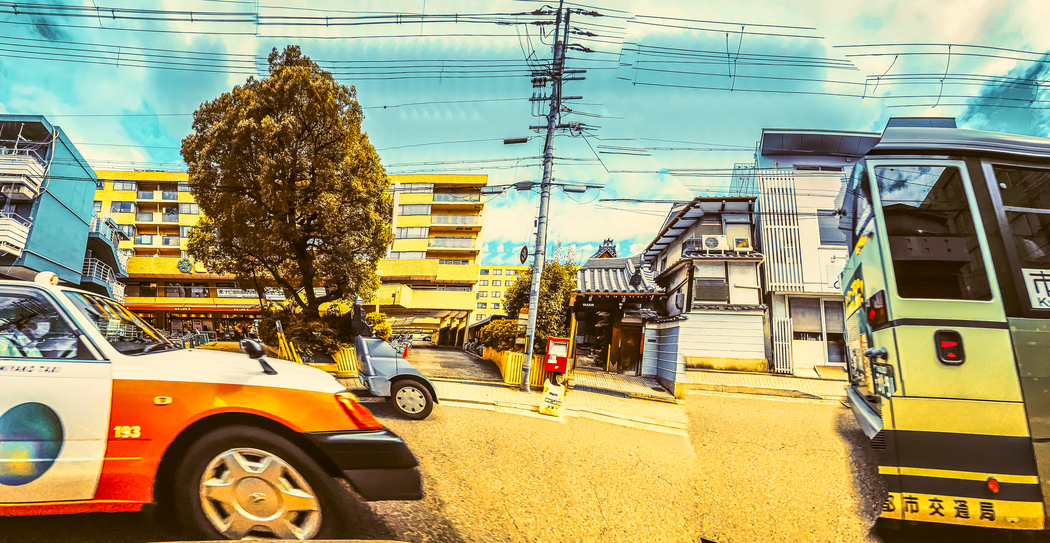 Geoff Langan | Kamigyou Ku, Kyoto
Geoff Langan | Kamigyou Ku, Kyoto
What draws you to urban and industrial landscapes in particular?
I grew up in a small town just outside Dublin, Ireland. As soon as I left home, I moved to London, where I lived for over twenty years. I loved London and it never let me down. Cities feel like the heart of a nation, where all the lifeblood flows. A healthy city like London can support all walks of life and allow them to breathe. True, it has its poverty, crime, and desolation, but it also hosts some of the most outstanding achievers, the finest minds, the most creative artists (of all disciplines) and gifted sports people. In healthy cities, there is room to grow, room to flourish. If you want a snapshot of a country, visit its cities.
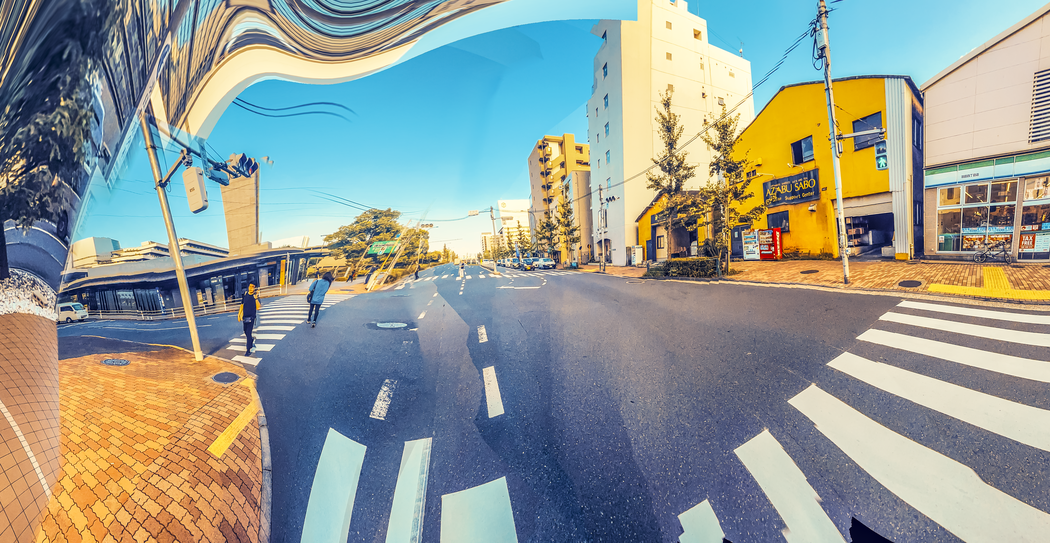 Geoff Langan | Kampachi Dori, Tokyo
Geoff Langan | Kampachi Dori, Tokyo
Your work feels very intentional in its composition. How do you approach photographing a new city?
When I go to a new city, I want to experience it in the most visceral way I can, without being noticed. I’m aware of the contradiction in what I have just said, but I like to wander, to drift wherever I want to, stop whenever I feel like, without distraction. I once spent three days in Nashville, and on the last day, I realised that, other than ordering food or asking for directions, I hadn’t spoken to anyone in all my time there. As an only child, I can tolerate my own company for extended periods.
I like to research extensively before visiting new places. This includes examining top tourist destinations, consulting guidebooks, exploring areas on Google Maps, and watching YouTube guides. I used to think that researching the place would spoil the surprise, but good knowledge means that I don’t miss anything important.
All that said, I rely heavily on my intuition and perception when I am there. I might have a route in mind, but it’s not about the destination. I am aware of what is happening around me………. most of the time.
And of course, there is the element of pure chance! When I started out as a photographic assistant, I worked for some excellent Still Life photographers. It was all about perfection, endlessly pursuing a predetermined result. It took me years to shed that rigid thinking. In Japan, I would regularly just point my camera straight out the window, not knowing what was coming up ahead and allowing chance to dictate what the camera captured.
Post-production is a much more considered time. That’s when I can easily spend hours on a photograph applying colours, contrast and composition until it ‘feels’ right. I can never decide which is more satisfying: photography or post-production.
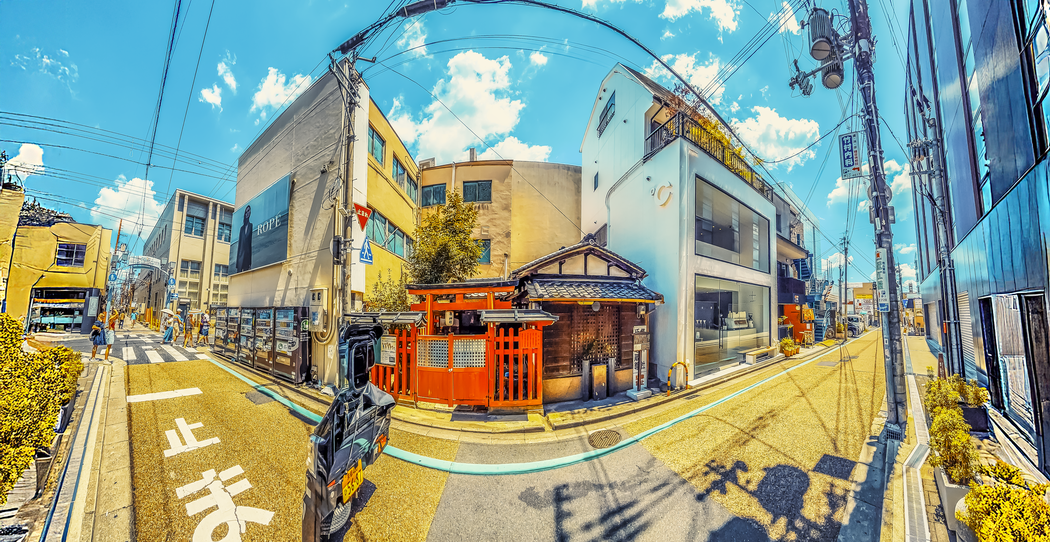 Geoff Langan | Konishi Sakura Dori, Nara
Geoff Langan | Konishi Sakura Dori, Nara
You mention perception and memory—how do these concepts influence the way you frame or process an image?
I envy people with good memories. I wish I could recall, at a moment’s notice, the details of a conversation, an event or even a place. I have such a poor memory, to the extent that I have rewatched films and still cannot recall a single detail of them. The benefit used to be that our collection of DVDs lasted for years without having to spend more money.
My latest work is from a trip I did to Japan. I had bought myself an excellent compact camera, especially for the trip, but when I got there, I quickly found it wasn’t the right tool for me. I started experimenting with the panoramic mode on my iPhone 15 Pro. As we travelled around by bus, taxi and train, I pointed the camera straight out the window at the passing cityscape. The pictures I took expressed perfectly how I saw Japan, a series of broken and fragmented images assembled into a single photograph. The photographs were bizarre, elongated, and fragmented, showing slices of buildings, people, cars, and shopfronts. This was also how I remembered Japan. Rarely was it in one continuous story line, but instead it was lots of tiny episodes compiled into a single image or memory. I don’t know if anyone else sees new places the way I do.
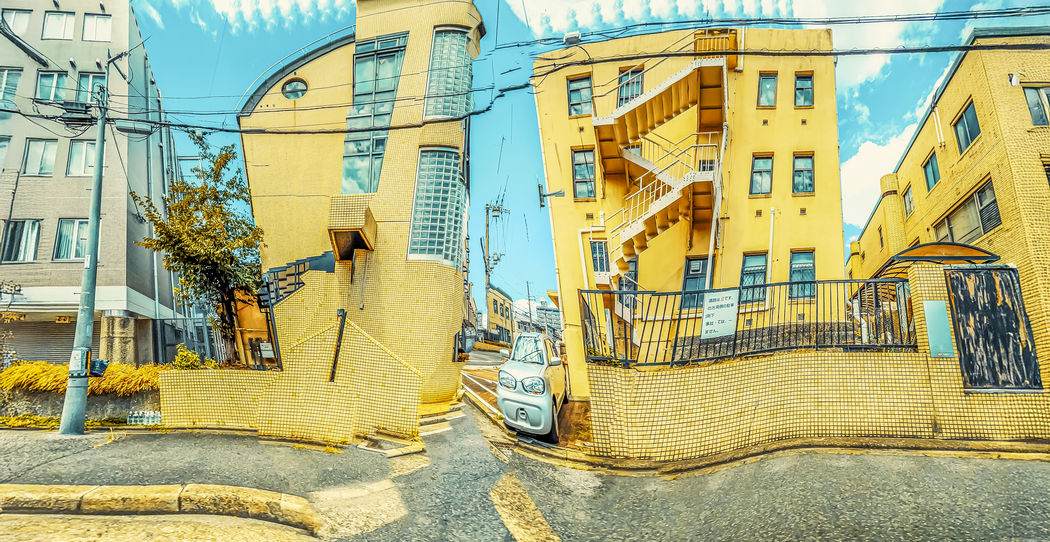 Geoff Langan | Takeyamachi Dori, Kyoto
Geoff Langan | Takeyamachi Dori, Kyoto
Why did you choose to present the photographs as objects, encased in resin and plaster? What does this physicality add to the work?
When my family took a holiday on the glorious Achill Island, off the West coast of Ireland, I bought a photograph by the artist John Michael Nikolai (https://www.nikolai.com/). It was unusual as it was encased in resin with a hardwood backing. It was, and still is, a beautiful object in our home. I have always wanted a reason to adopt this technique for my own work. The images from Japan seemed the perfect opportunity to use them.
The photographs I took in Japan didn’t resemble anything I had seen before, so I wanted to present them in a unique way. It took me months to learn how to use resin, and I am still learning. I use plaster on the reverse as I want to give it an aged and distressed look.
The idea behind this is that I wanted to create an object that people could hold. Much of photography is a ‘hands-off’ medium. From the lens to the camera, to the computer, to the final print, it feels like a ‘hands-off’ piece of art. I wanted something visceral, something a viewer could physically engage with. I also like the idea that it has the appearance of an artefact from a different place, a photograph that has been ‘taken’ from elsewhere.
Do you consider your images more documentary or abstract in nature?
I love this question as it has made me focus on what my photographs really are. Initially, I saw them as abstract images, but they evoke strong memories for me, and they are how I perceived the city. I now consider them somewhere between abstract and documentary. For my next planned trip, I intend to include more people in my photographs.
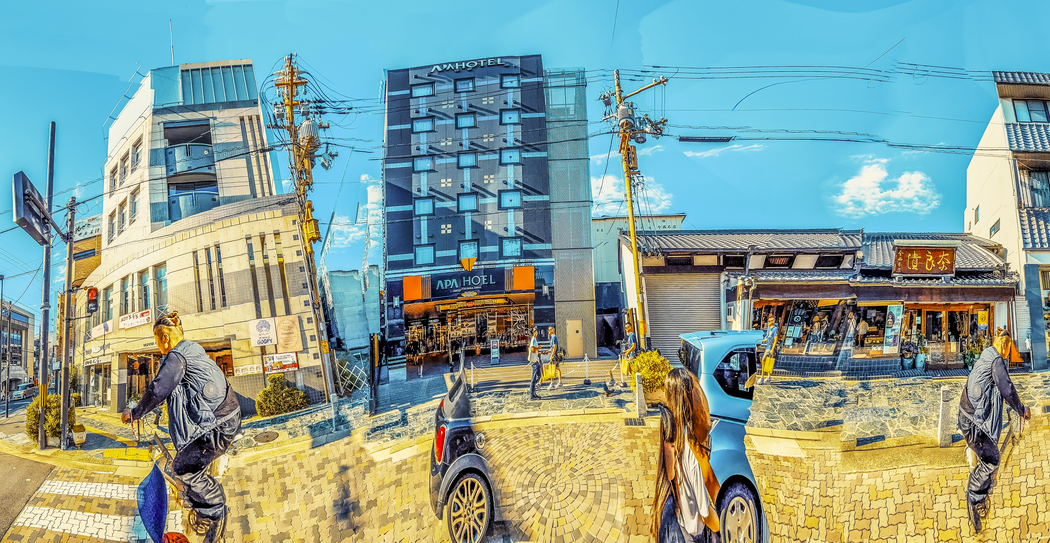 Geoff Langan | Sanjo Dori Street, Nara
Geoff Langan | Sanjo Dori Street, Nara
Is there a particular city or place that has left a strong impression on you?
Ever since I was a teenager, I had always wanted to visit Tokyo. I was disappointed to find it was nothing like what I had imagined. It was far from the amine depictions of dark, gothic, rain-soaked streets. But of course…Tokyo was bombed during the Second World War, and 60% of the city went up in flames. However, when we got to Kyoto, the ancient capital, I was spellbound. Much of ancient Kyoto remains intact to this day, despite being constantly rebuilt due to its wooden structures. If I go back to Japan, Kyoto will be my first stop.

Leave a Reply